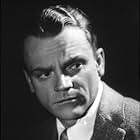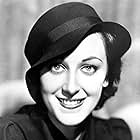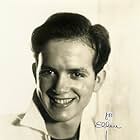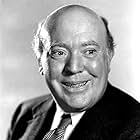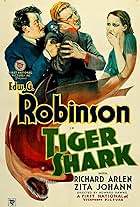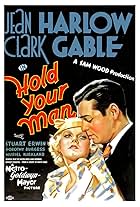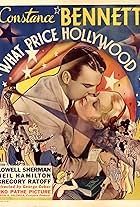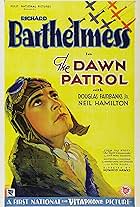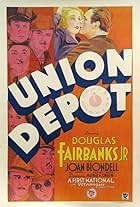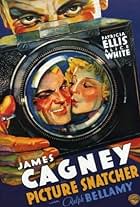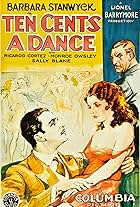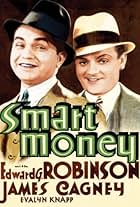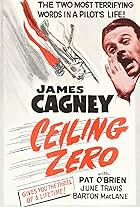IMDb RATING
6.2/10
1.5K
YOUR RATING
Race car driver becomes overprotective of his brother when he decides to become a racer as well.Race car driver becomes overprotective of his brother when he decides to become a racer as well.Race car driver becomes overprotective of his brother when he decides to become a racer as well.
- Awards
- 1 nomination total
Jack Brisco
- Jack Brisco
- (uncredited)
James P. Burtis
- Red - Joe's Mechanic
- (uncredited)
Ralph Dunn
- Racetrack Official
- (uncredited)
Storyline
Did you know
- TriviaStock footage was temporarily removed from this one to be used in the remake, Indianapolis Speedway (1939); when it was replaced back into this film's negative, some of the "Indianapolis Speedway" footage got mixed in with it, so that you now see 1939 footage in a 1932 film, including shots of a late 1930s ambulance and automobiles as well as racing announcers Wendell Niles, John Conte and Reid Kilpatrick, who did not appear in the film as it was originally released.
- GoofsA Santa Fe Railroad car is being shown unloading in Indianapolis, Indiana. That railroad only operated as far east as Chicago, Illinois.
- Quotes
Anne Scott: I didn't hear you knock?
Joe Greer: Since when is a dame like you expect guys to knock?
- Alternate versionsOriginally at 85 minutes, the only available prints of "The Crowd Roars" have a running time of only 70 minutes. Even Warner Brothers only offers the 70 minute version for sale. The oddest gap in the plot in the 70 minute version, is how Joe Greer (James Cagney) suddenly ends up behind the wheel of his brother Eddie's car in the big race after Eddie got hurt and couldn't finish the race, when last we saw Joe he was down and out in girlfriend Lee's (Ann Dvorak) apartment.
- ConnectionsAlternate-language version of La foule hurle (1932)
Featured review
The seven is for the racing footage; I'd have to give the film as a whole something lower; this looks like a standard "programmer" from the period. I've seen "TCR" several times, and this time decided to watch it to try to determine where the racing footage was shot and what kind of cars these are.
I have to (somewhat educatedly) guess that we're looking at the old Jeffrey's Ranch Speedway in Burbank in the first racing sequence. It was pretty close to the Warner back lot, and (according to racing historian Harold Osmer) in operation from '31 to '35.
The stands are covered, and there are a lot of large trees close by, as well as equestrian facilities, all three items definitely not the case at Legion Ascot or Huntington Beach. I've been told that Culver City's half mile of that period did not have any equestrian facilities, either, which deals with all the tracks in the region in '31 and '32.
The cars in these shots are largely Ford-Model-A-block / any-odd-freer-breathing-head, rear-drive, backyard/filling-station bombs on Ford rails rather than anything from Harry Miller's shop in nearby Vernon, though there might be an early Miller 200, 220 or 255 (the basis of the famed Leo-Goosen-designed, "Offy" 255/270 built by Offenhauser & Brisko and, later, Meyer & Drake).
This is doubtful, however, as those engines and complete (usually two- or three-year-old) Miller chassis rarely ran anywhere but Legion Ascot in the LA area at that time.
The second (nighttime) sequence is at Legion Ascot, and its 20,000 seats look to be pretty full, which, even when they weren't shooting a feature film, were pretty full even in the nadir of the Great Depression. Veteran dirt track fans will note that Ascot's oiled surface runs pretty much dust-free compared to the old horse track in Burbank.
The third group of action sequences shot at the Brickyard feature top-of-the-line Miller and Deusey rails, as well as several of the very best drivers of the period including Fred Frame and Billy Arnold, both Indy winners (1930 and 1932, respectively; Lou Schneider won the '31 race in the Bowes Seal Fast Special seen momentarily here). Careful listeners will hear the unmistakable snarl of the early "Offy" fours in the background.
Sadly, the sound era was just getting underway as the legendary Miller 91s and the incredible board tracks they ran on were phased out in '29. Open-wheel racing in the '30s was -good-, but OW racing in the previous decade (at tracks like Beverly Hills and Culver City) was as big -- and spectacular, and fast -- then as NASCAR is now on mile ovals.
The Indy scenes feature the (more nearly "stock car") two-seaters and "poor man's" engines that were mandated at the time to reduce costs and break the high-tech/high-buck, Miller stranglehold of the late '20s. There were Deusies, Fords and even Studebakers running the big tracks in those days, but Harry Miller's cars and engines continued to dominate.
I have to (somewhat educatedly) guess that we're looking at the old Jeffrey's Ranch Speedway in Burbank in the first racing sequence. It was pretty close to the Warner back lot, and (according to racing historian Harold Osmer) in operation from '31 to '35.
The stands are covered, and there are a lot of large trees close by, as well as equestrian facilities, all three items definitely not the case at Legion Ascot or Huntington Beach. I've been told that Culver City's half mile of that period did not have any equestrian facilities, either, which deals with all the tracks in the region in '31 and '32.
The cars in these shots are largely Ford-Model-A-block / any-odd-freer-breathing-head, rear-drive, backyard/filling-station bombs on Ford rails rather than anything from Harry Miller's shop in nearby Vernon, though there might be an early Miller 200, 220 or 255 (the basis of the famed Leo-Goosen-designed, "Offy" 255/270 built by Offenhauser & Brisko and, later, Meyer & Drake).
This is doubtful, however, as those engines and complete (usually two- or three-year-old) Miller chassis rarely ran anywhere but Legion Ascot in the LA area at that time.
The second (nighttime) sequence is at Legion Ascot, and its 20,000 seats look to be pretty full, which, even when they weren't shooting a feature film, were pretty full even in the nadir of the Great Depression. Veteran dirt track fans will note that Ascot's oiled surface runs pretty much dust-free compared to the old horse track in Burbank.
The third group of action sequences shot at the Brickyard feature top-of-the-line Miller and Deusey rails, as well as several of the very best drivers of the period including Fred Frame and Billy Arnold, both Indy winners (1930 and 1932, respectively; Lou Schneider won the '31 race in the Bowes Seal Fast Special seen momentarily here). Careful listeners will hear the unmistakable snarl of the early "Offy" fours in the background.
Sadly, the sound era was just getting underway as the legendary Miller 91s and the incredible board tracks they ran on were phased out in '29. Open-wheel racing in the '30s was -good-, but OW racing in the previous decade (at tracks like Beverly Hills and Culver City) was as big -- and spectacular, and fast -- then as NASCAR is now on mile ovals.
The Indy scenes feature the (more nearly "stock car") two-seaters and "poor man's" engines that were mandated at the time to reduce costs and break the high-tech/high-buck, Miller stranglehold of the late '20s. There were Deusies, Fords and even Studebakers running the big tracks in those days, but Harry Miller's cars and engines continued to dominate.
- rajah524-3
- May 8, 2008
- Permalink
- How long is The Crowd Roars?Powered by Alexa
Details
- Release date
- Country of origin
- Language
- Also known as
- The Roar of the Crowd
- Filming locations
- Nutley Velodrome, Nutley, New Jersey, USA(night board track racing)
- Production company
- See more company credits at IMDbPro
Box office
- Gross US & Canada
- $1,142,320
- Gross worldwide
- $1,676,420
- Runtime1 hour 25 minutes
- Color
- Sound mix
- Aspect ratio
- 1.37 : 1
Contribute to this page
Suggest an edit or add missing content









